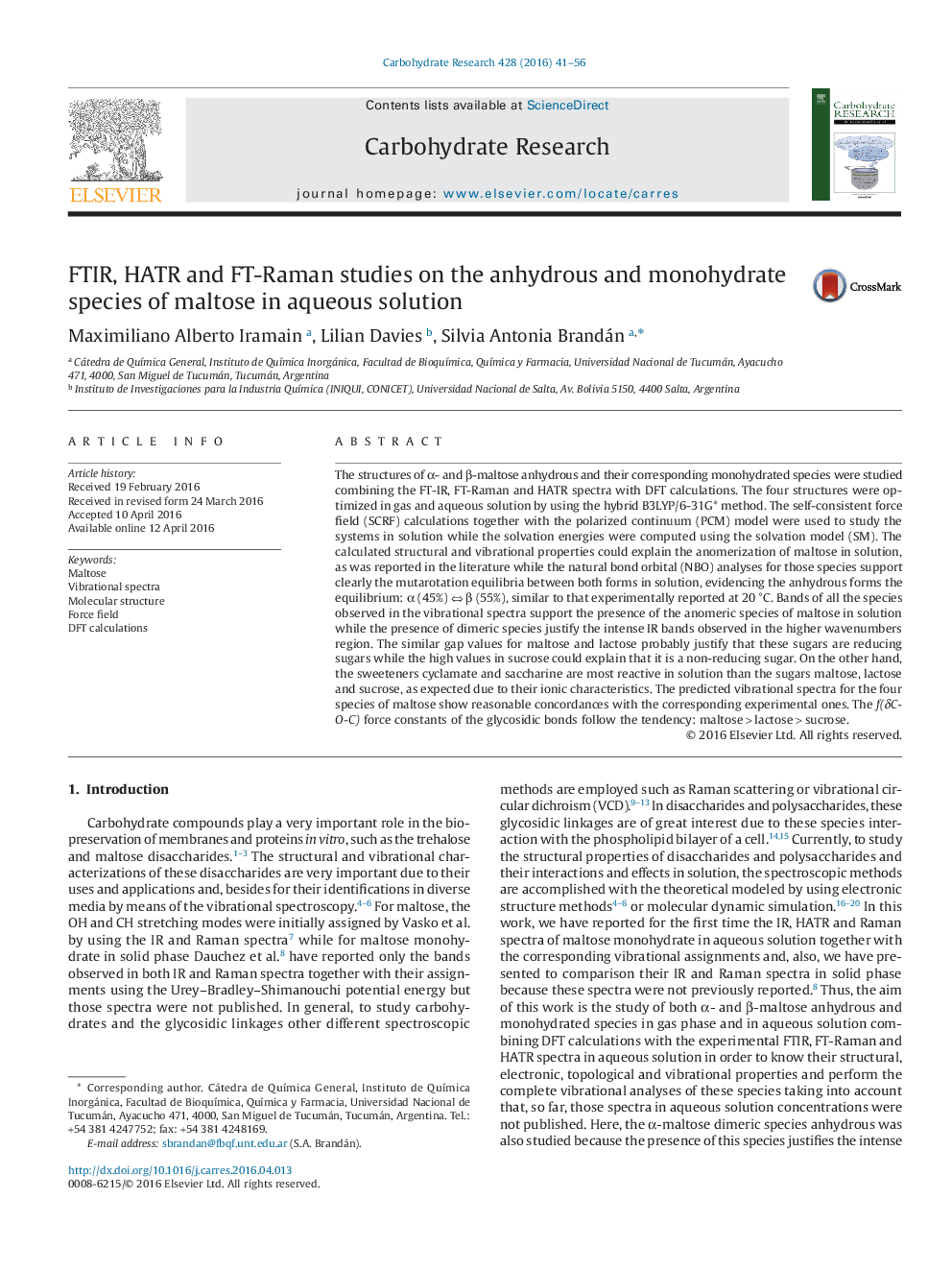| کد مقاله | کد نشریه | سال انتشار | مقاله انگلیسی | نسخه تمام متن |
|---|---|---|---|---|
| 1390049 | 1500823 | 2016 | 16 صفحه PDF | دانلود رایگان |

• Four structures of maltose in water were studied using the vibrational spectroscopy.
• The four systems in aqueous solution were optimized with the SCRF and PCM methods.
• The shifting of bands in the spectra can explain the anomerization of maltose.
• The NBO analyses support the mutarotation equilibria between both forms in solution.
• The anhydrous forms present the equilibrium in solution: α (45%) ⇔ β (55%).
The structures of α- and β-maltose anhydrous and their corresponding monohydrated species were studied combining the FT-IR, FT-Raman and HATR spectra with DFT calculations. The four structures were optimized in gas and aqueous solution by using the hybrid B3LYP/6-31G* method. The self-consistent force field (SCRF) calculations together with the polarized continuum (PCM) model were used to study the systems in solution while the solvation energies were computed using the solvation model (SM). The calculated structural and vibrational properties could explain the anomerization of maltose in solution, as was reported in the literature while the natural bond orbital (NBO) analyses for those species support clearly the mutarotation equilibria between both forms in solution, evidencing the anhydrous forms the equilibrium: α (45%) ⇔ β (55%), similar to that experimentally reported at 20 °C. Bands of all the species observed in the vibrational spectra support the presence of the anomeric species of maltose in solution while the presence of dimeric species justify the intense IR bands observed in the higher wavenumbers region. The similar gap values for maltose and lactose probably justify that these sugars are reducing sugars while the high values in sucrose could explain that it is a non-reducing sugar. On the other hand, the sweeteners cyclamate and saccharine are most reactive in solution than the sugars maltose, lactose and sucrose, as expected due to their ionic characteristics. The predicted vibrational spectra for the four species of maltose show reasonable concordances with the corresponding experimental ones. The f(δC-O-C) force constants of the glycosidic bonds follow the tendency: maltose > lactose > sucrose.
Figure optionsDownload as PowerPoint slide
Journal: Carbohydrate Research - Volume 428, 16 June 2016, Pages 41–56